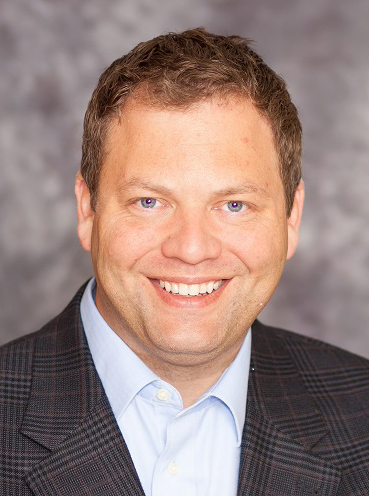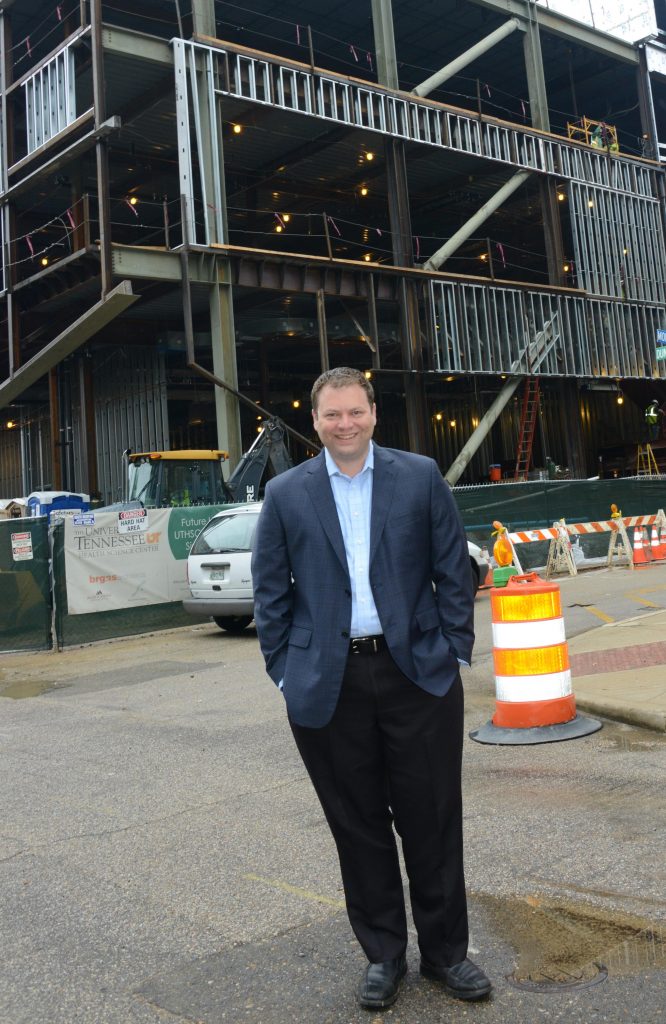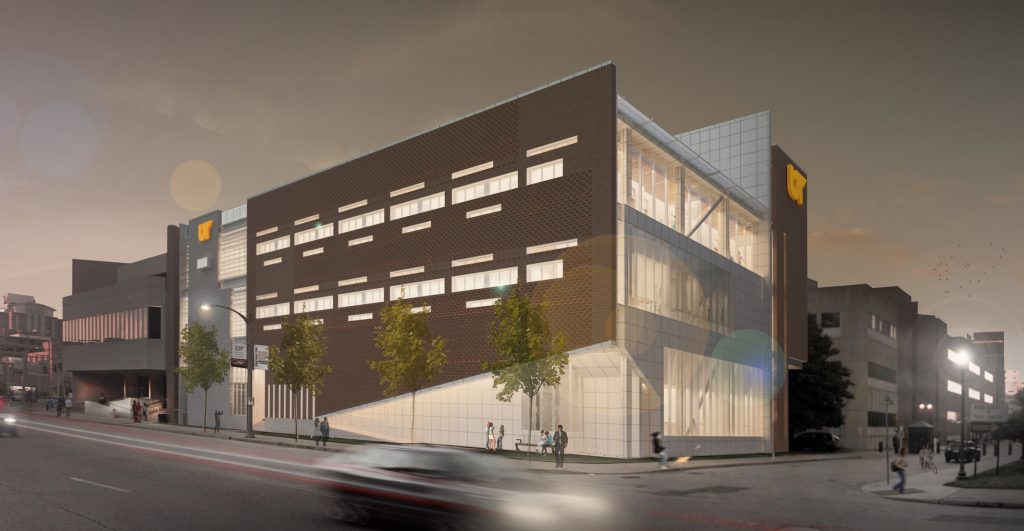
Chad Epps, MD, was a high school teacher before he became a physician. As the new executive director of the Interprofessional Simulation and Patient Safety Center under construction at the University of Tennessee Health Science Center (UTHSC), Dr. Epps will combine his expertise as a physician and a teacher to improve education for future health care professionals and the quality of care their patients will receive.
Dr. Epps, who trained in anesthesiology at the Mount Sinai School of Medicine in New York and completed a fellowship in Human Patient Simulation at Mount Sinai Human Emulation Education and Evaluation Lab for Patient Safety and Professionalism, begins his new job at UTHSC June 1.
He will be the first to lead academic programs in the new $36.7 million building, which is expected to be completed in 2017. The building will allow students from all six colleges at UTHSC to train together in simulation settings to develop their skills in delivering team-based health care, which is the model for the highest-quality care today. Using high-tech manikins and standardized patients (actors who portray patients with a variety of conditions), UTHSC will offer state-of-the-art training under the safest conditions possible.

Most recently, Dr. Epps has served as the associate director for the Office of Interprofessional Simulation at the University of Alabama at Birmingham (UAB), and as an associate professor with academic appointments in four schools there — Medicine, Health Professions, Nursing and Engineering. He received his medical degree from the Medical College of Georgia School of Medicine in Augusta.
“I think I’ve always had the heart of an educator,” Dr. Epps said. “I was exposed to the powerful effects of simulation during my residency in anesthesiology. I was so drawn to it as an educational modality that I completed a fellowship in simulation, and have been working in health care simulation ever since.”
Dr. Epps has been active in simulation education, research, assessment and center management for more than 10 years. The UAB simulation team successfully constructed an organizational model for implementing high-quality, interprofessional simulations at both the university and health system level.
“Health care simulation epitomizes everything we know about adult learning theory — adults learn by doing, learn best by focusing on problems, and want guidance,” he said. “It’s a perfect fit.”
Dr. Epps is president of the Society for Simulation in Healthcare and past chair of the Council on Accreditation of Healthcare Simulation Programs. He is published in the area of simulation-based interprofessional education, and co-edited the recently released textbook “Defining Excellence in Simulation Programs.”
Dr. Epps has been a consultant on the building at UTHSC since January. “My vision for the building is to create a program by which we work with our students and our clinical partners to make patient care safer,” Dr. Epps said. “That’s the bottom line. It’s about creating health care workers who provide better care and improve patient safety.”

Each floor of the three-story building will be dedicated to a different aspect of simulation training, he said. The first floor includes bed-skill stations that will allow students to focus on preclinical skills and assessments. There will also be a simulated home environment, where students can practice delivering in-home patient care.
The second floor will house a simulated acute-care setting resembling a hospital environment with patient rooms and a variety of manikins that can simulate everything from surgery to labor and delivery.
The third floor will house the standardized patient program. It will include 24 patient exam rooms, as well as a community pharmacy setting.
Dr. Epps said he was drawn to Memphis and UTHSC because it offered an opportunity to work in a stand-alone building specifically built for simulation. “Quite honestly, it’s not that easy to find in most institutions,” he said.
The building is a reflection of a culture at UTHSC that values this type of training, he added. “It’s most definitely a statement to the community that this institution is making a commitment to improving the way health care professionals are trained and the way health care is delivered.”
Lori S. Gonzalez, PhD, vice chancellor for Academic, Faculty and Student Affairs said, “UTHSC is so fortunate to have Dr. Epps leading our simulation activities. His reputation as a leader in simulation and interprofessional education will position us well into the future. The new center will provide learning opportunities for our students and our clinical partners.”
